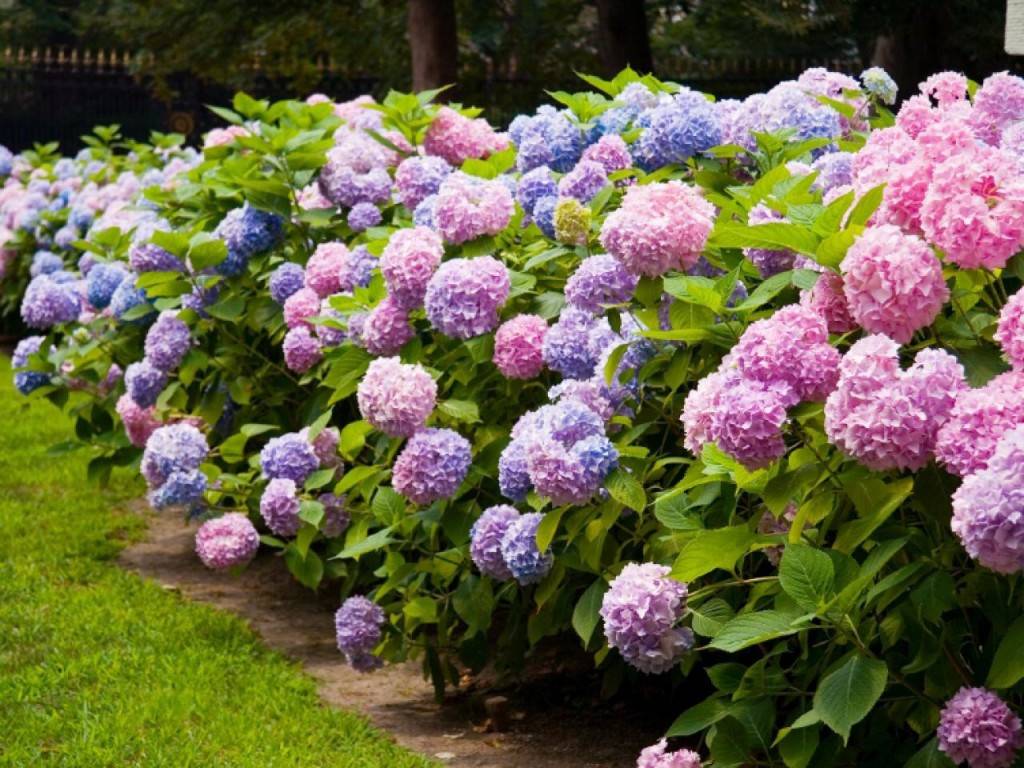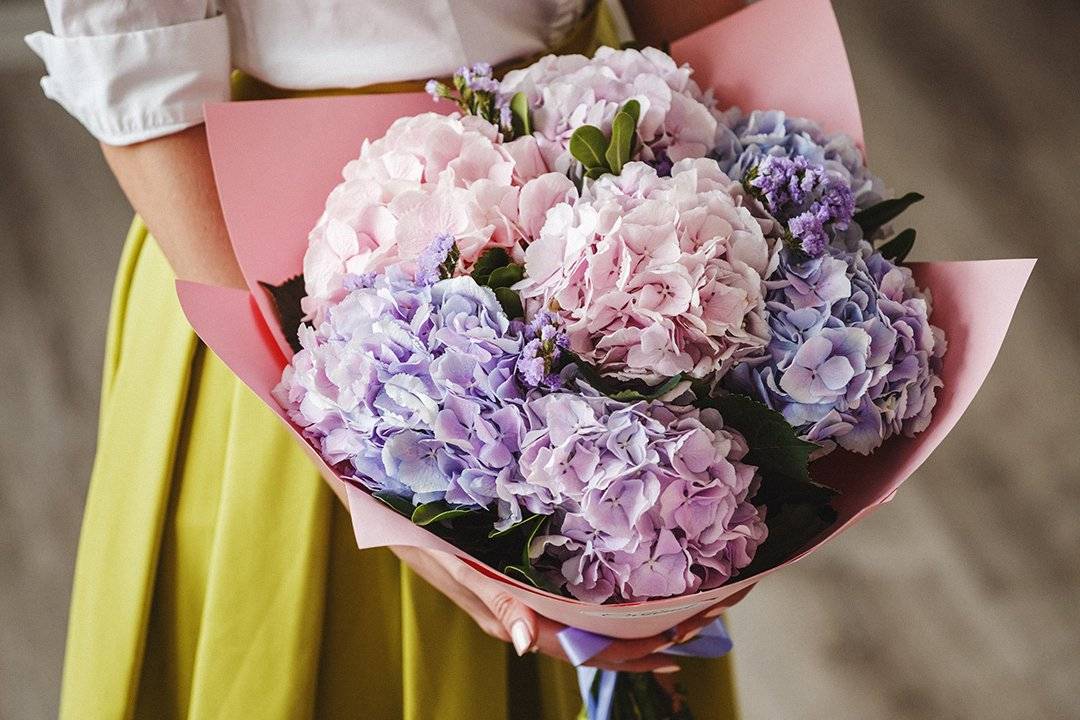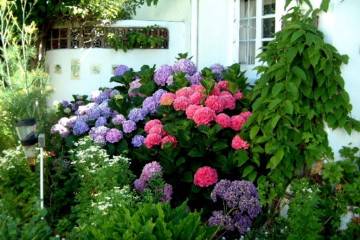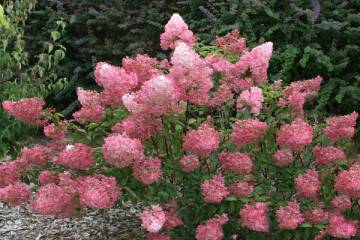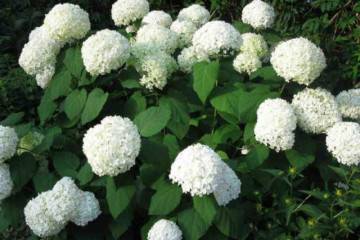Hydrangea Summer Love (Summer Love) - description
Content:
Hydrangea is a flowering perennial bush or liana. The inflorescences are large, most often white, but there are plants with blue, blue, pink and even almost red flowers. It all depends on the composition of the soil and the variety. So panicle hydrangea Summer Love every summer pleases those around with beautiful pale pink hats. But in order to achieve annual flowering, it is necessary to remember some of the features of growing this flower, which we will talk about.
Description of hydrangea Summer Love (Hydrangea Paniculata Summer Love)
Hydrangea Summer Love is an ornamental deciduous shrub, up to 1-1.5 m high.
Has the following features:
- inflorescences are colored pink. Panicles are large;
- the roots are kept at the surface;
- good frost resistance;
- develops rapidly, blooms in the first year after disembarkation;
- the crown of the shrub is spherical, it is easy to form it in the right way.
The origin and appearance of Summer Love hydrangea
Hydrangea Summer Love is common in Asia, North and South America, it is grown in Russia, China and Japan. There are 52 species of different plants in the hydrangea family. This novelty plant came to Europe from China in 1789, but mass selection began in 1900.
Grow hydrangea outdoors. It is a decoration of the garden from July to September (flowering time depends on the region). The leaves are dark green, oval, sometimes slightly elongated, the inflorescences are conical, the diameter of each cap is about 15-20 cm. The shoots are tree-like and very strong, but sagging under the weight of the flower baskets, so the plant must be tied up before flowering. In general, hydrangea is a favorite of gardeners, the characteristic is given to it positive, flowers can be used to create beautiful bouquets.
How Summer Love Hydrangea Blooms
Blooms in June-July. The first time, about 2 weeks, the inflorescences are white.
If the soil is suitable, then after the specified time, a slight pinkish dusting appears. Each day, the color becomes more saturated, until at the end of August it acquires a perfect dark pink hue.
Transplanting Summer Love hydrangea after purchase in open ground
Annual plants with a developed root system and stems at least 8-10 cm high are planted in a permanent habitat in open ground.
What is needed for landing
In order for the hydrangea to take root, you must:
- choose the right landing site;
- all tools used should be disinfected in a solution of potassium permanganate;
- purchase planting material from a trusted manufacturer (it is better to purchase seedlings in pots with a closed root system).
The plant prefers acidic loamy soils. The land should be loose and drained, groundwater should not be closer than 1.5 m from the surface.
Choosing the best place
Hydrangea loves light, so it is planted on slopes and hills, well-lit by the sun and protected from wind and drafts.One adult bush takes about 1-1.5 meters, so the place is chosen taking into account the possible shading of other plants by it. Next to the hydrangea, only heather plants get along well, the rest have a hard time, because in a dry summer, a flower that does not receive moisture begins to actively draw its remains from the soil, depriving other garden crops of the nutrition they need. You will have to either actively water or plant separately.
Bushes need support, it is better to plant them near a fence or tie them to a trellis.
Step-by-step planting process
Before planting, the selected area is dug up, breaking up large clods of earth. To increase the acidity of the soil:
- make peat or mullein (1 bucket);
- use potassium sulfate or ammonium sulfate (40 g per 1 sq. m);
- spill the earth with citric acid diluted in water (1.5 tablespoons per 10 liters of water);
- use a vinegar solution (1 tbsp. per 10 liters of water).
Further:
- dig a hole 50-60 cm deep;
- cover the bottom with rubble or broken brick (drainage);
- the drainage is sprinkled with a mixture of peat, turf, sand and humus with the addition of superphosphate;
- the seedling is taken out of the pot along with the ground and placed in the center of the pit;
- fill the hole with earth and water the plant with warm water (10-15 l).
The soil under the bush is tamped and mulched with a mixture of crushed pine needles, pine sawdust and peat.
Reproduction of hydrangea Summer Love
Hydrangea is propagated by dividing the bush, cuttings, grown from cuttings. The growth rate of a young bush and the time of its flowering depend on the chosen method of reproduction.
Propagation by cuttings
A popular but time-consuming method of obtaining young plants, the essence of which is reduced to the sequential implementation of the following actions:
- in spring, the strongest stems are cut from the bushes;
- cut the resulting planting material into pieces (at least 3 buds should remain on each shoot);
- the resulting cuttings are placed in a container filled with a root growth stimulator for a day;
- ammonium sulfate is added to the ground, it is loosened well, after which the cuttings are added dropwise (deepened by 5-6 cm) and covered with a film.
Several times a week, the film is removed to water and ventilate the plants. After 1.5-2 weeks, the artificial shelter is removed, caring for the cuttings as for adult plants.
Growing from cuttings
One of the simplest methods of reproduction that does not harm the mother plant. To get young growth:
- in the spring, the lower branches of the hydrangea are bent to the ground and sprinkled with a small amount of peat, securing with a wire bracket for reliability;
- regularly water the place where the cut is located.
For the winter, the rooted twig, still tied to the main bush, is applied with spruce paws, protecting it from frost. Adult plants can withstand temperatures as low as -35 degrees Celsius, but young shoots may die. The next spring, the layering is separated from the bush and transplanted.
Dividing the bush
An overgrown hydrangea bush can be dug up and divided into several smaller bushes, the main thing is to leave on each a sufficient number of roots for rooting. The method does not always work, there is a risk of death of the main bush and young growth, therefore it is not used so often.
Before dividing, the bushes are watered, dug out carefully, trying not to damage the roots. They are very delicate and are mostly located near the surface.
Summer Love Hydrangea Care
Hydrangea loves moisture, it needs to be fed at least 4 times per season. Proper care allows you to admire the beauty of flowering bushes for more than a dozen years.
Watering mode
Young seedlings are watered up to 2 times a week, pouring at least 10 liters of warm, settled water under each bush. Watering is carried out in the evening or from morning until sunrise.Adult plants can be watered once a week, provided it rains occasionally. If the summer is hot, the amount of moisture consumed by the plants increases.
Top dressing
They begin to feed with the appearance of the first buds. Fertilizers (nitrogen nitrate) should be applied to the soil at the end of March or beginning of April. Mullein or chicken droppings can be used instead of nitrogenous fertilizers. But it is better to alternate - pour saltpeter under the bush one spring, and the second - chicken droppings diluted with water. In the spring, under the bushes, it is recommended to sprinkle nitroammofosk (2 tbsp. L. Per bush).
In summer, plants are fed with potassium and phosphorus. It can be potassium salt or potassium sulfate. In the fall, the soil is fertilized with nitroammophos in the same amount as in the spring.
Features of care during flowering
In summer, the land under the bushes is regularly loosened and weeded. Weeds take away the moisture it needs from the plant. The soil must be mulched with peat. This helps to reduce the number of hillocks and keep all work in the garden where hydrangeas are grown to a minimum.
If the flowering is abundant, the stems will have to be tied to a support or tied together, covering the entire bush with a ribbon. The twigs may not support the weight of large inflorescences and break off, the garter solves this problem.
Features of care during the rest period
In September, after the end of flowering, there is a dormant time. High stems are cut, leaving no more than 25-30 cm of green mass above the ground. Plants continue to water, make the necessary fertilizing.
Preparing for winter
Hydrangea is not covered for the winter. It is frost-resistant, it is enough to warm up a large amount of snow on the soil near the trunk.
Hydrangea Summer Love is an ornamental shrub that can decorate any garden. He loves warmth, light and moisture, so he makes certain demands on the landing site. During the season, the plant will have to be fed several times, regularly watered and pruned old dried branches and inflorescences. The pink shade of flower caps is associated with the acidity of the soil, the higher it is, the richer the color.

